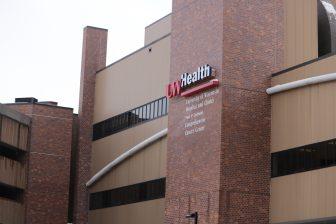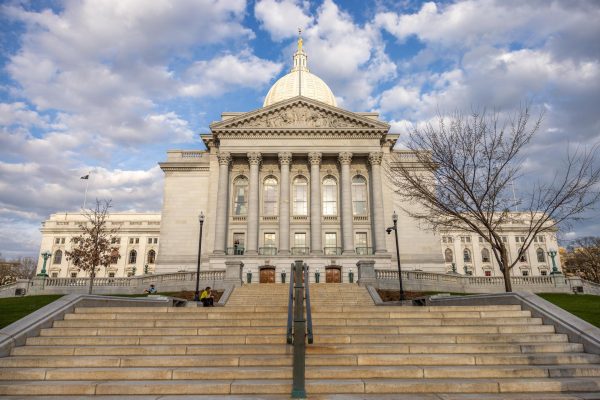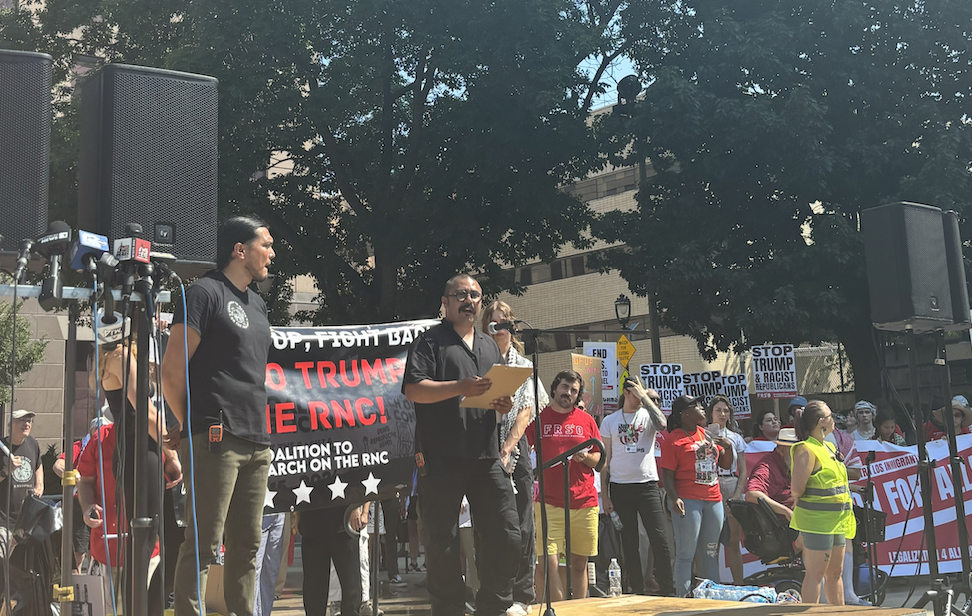Seven schools in the Universities of Wisconsin — Green Bay, Oshkosh, Parkside, Platteville, River Falls, Superior and Whitewater — will amass $254.9 million in debt by the end of the 2028 fiscal year if no changes are made, according to the UW System 2023–28 Strategic Plan.
In response, Gov. Tony Evers released a statement April 12 that attributed the UW System’s financial troubles to disinvestment and insufficient funding from the Wisconsin State Legislature over the last decade. Wisconsin State Sen. Kelda Roys (D-Madison) said since 2011 under former Gov. Scott Walker, Republicans in the Wisconsin State Legislature have been making cuts and refusing to account for inflationary changes in the university’s budget.
The lack of investments has resulted in a decline in the operating of the schools’ functions and will require adjustments to current programs, according to UW professor emeritus of public affairs and applied economics Andrew Reschovsky.
“They have to make some changes and that may be losing faculty, larger class sizes [or] cutting down on some majors,” Reschovsky said. “[The universities] may not be providing some services to students that they previously had. The big picture is that revenues are not growing as fast as spending costs — something has to go.”
Multiple schools in the UW System have felt the impacts of this financial strain. Last fall, UW–Oshkosh cut 200 non-faculty staff and administrators in response to a $18 million budget shortfall, according to an October 2023 press release. Last year, UW–Platteville also eliminated 11 positions and UW–Green Bay laid off nine members of faculty.
Furthermore, multiple two-year campuses in the UW System have faced closure. Most recently in October 2023, UW System President Jay Rothman announced in-person instruction at UW–Milwaukee’s Washington County campus and UW–Oshkosh’s Fond du Lac campus would come to an end by a target date of June 2024. Rothman also announced the UW–Platteville Richland campus would close entirely.
Rothman attributes these closures to declining enrollment at satellite campuses over the past decade. While Rothman communicated that students will be offered enrollment opportunities at other universities, closures may deter students in these communities from pursuing higher education all together, according to Roys.
“The closure of these two-year campuses is going to hit these communities very hard — not just now with the obvious loss of jobs and revenue — but long into the future when those educational opportunities have dried up for young people,” Roys said.
Notably, state funding for Wisconsin’s four-year universities is significantly lower than funding other public university systems receive. In 2022, Wisconsin’s public universities received $16,036 in tax and tuition funding per student — $3,350 less than the national average — ultimately ranking 43rd on a national scale, according to a report from Wisconsin Public Forum. For Wisconsin’s universities to reach the median level of national funding, it would require the allocation of $440 million in annual investments, according to an April 11 statement from Rothman.
A driving reason for this disparity was the tuition freeze for all UW students, which started in 2013 and continued for resident undergraduates for a decade, according to Roys.
“It’s important to say that the tuition freeze was unfunded,” Roys said. “So it was just another way to essentially cut funding to the universities under the guise of doing something that was politically popular. It’s one thing to say we don’t want young people to have to pay a lot for college — I think it’s very reasonable — but then you have to provide the funding for it … they didn’t do that.”
The Board of Regents’ motivation in 2013 for this tuition freeze was to increase price competitiveness with competing university systems and revenue from nonresident and international student enrollments, which ultimately provides more funding to subsidize Wisconsin residents’ tuition, according to a 2013 statement from the Universities of Wisconsin.
An affordability review of the UW System conducted in 2022 found Wisconsin’s public universities were the most affordable in the Midwest, according to a March 28 press release from the UW System. As of 2023, tuition for a public four-year Wisconsin university cost 16.23% less than the national average, according to the Education Data Initiative. But, the rate of international students comprise only 4% of the UW System’s undergraduate population — a rate that trails competing university systems in Minnesota and Illinois, according to the Wisconsin State Journal.
The Board of Regents voted in March to increase resident undergraduate tuition by 3.75% to keep up with inflation, according to previous reporting from The Badger Herald.
With tuition increases comes concern about recruiting students from diverse socioeconomic backgrounds. Previous efforts to address this concern include Bucky’s Tuition Promise — a program that underwrites tuition and housing fees for first-time students who come from low-income backgrounds. Though there have been pushes made to expand these programs, Republicans in the Wisconsin State Legislature have not voted to allocate sufficient funds to the UW System to do so, Roys said.
Measures taken by universities to alleviate financial stress is essential to addressing Wisconsin’s labor force shortages in the coming years, according to Reschovsky. In 2023, Wisconsin experienced low unemployment rates and high labor force participation rates, but these trends may stagnate as Wisconsin’s population ages, according to a 2023 report from the Wisconsin Manufacturers and Commerce Foundation.
“[UW System’s] initiatives are trying to say, ‘Wait a minute, if we want to guarantee that we’re going to have a labor force in Wisconsin … we need to attract as many Wisconsin residents [to universities] as possible,’” Reschovsky said. “They have to look for students who otherwise are academically qualified but don’t enroll because they don’t have adequate resources, so [the UW System is] going to spend some money to make that possible.”

















